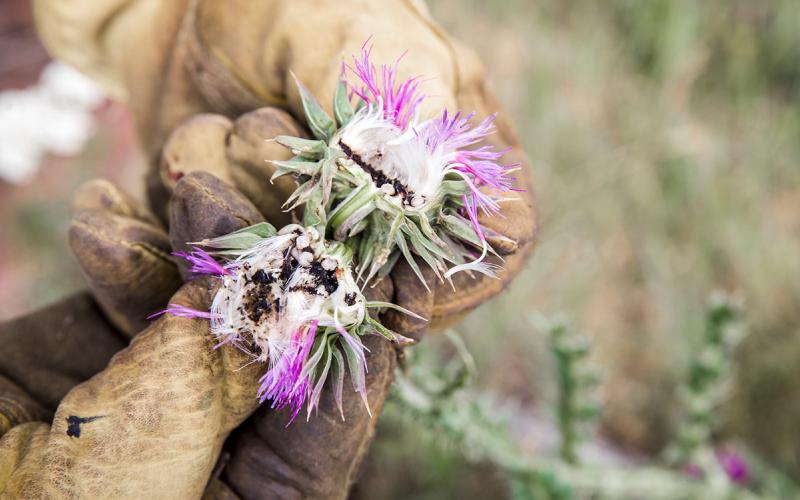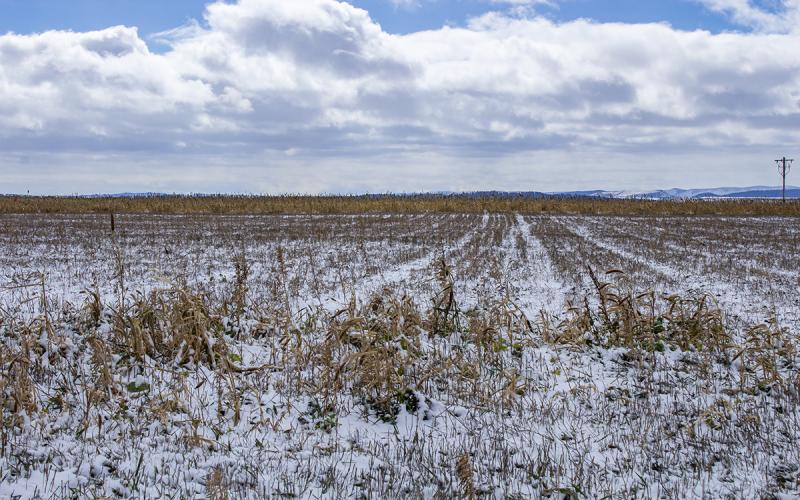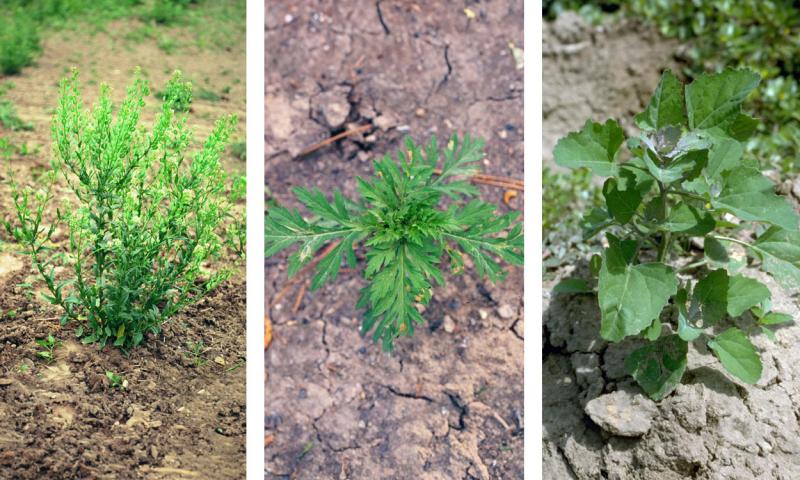
Written collaboratively by Eric Jones, Philip Rozeboom, David Vos, and Jill Alms.
Increased day length, air temperature, soil temperature, and moisture will stimulate germination of select weed species. Many of these weed species will germinate before the crop or will emerge with the crop. Managing these early emerging weeds before crop planting or emergence is important to minimize early season competition, which can lower yield potential, even if the weeds are managed later in the season.
Winter Annual Weeds
Winter annual species, such as cheatgrass (downy and Japanese brome), mustards (field pennycress and wild mustard), and other species, will already be established and will need to be treated with a burndown herbicide application. Tillage can effectively manage winter annual weeds, but these species are usually more prevalent in no-till fields. When managing winter annuals with herbicides, consider the air temperature before spraying. Herbicides do not work as well under cooler temperatures, as weeds are not actively growing (~less than 40 degrees Fahrenheit). Wait for ideal conditions (at least 50 degrees Fahrenheit) to spray weeds. Most winter annual weeds can be controlled with glyphosate (Roundup), but strongly consider including another herbicide into the tank mix (for example, 2,4-D) to increase the spectrum of weed control.
If the winter annuals are established within a winter wheat crop, growth regulator (2,4-D; dicamba; fluroxypyr - Starane) and ALS-inhibiting herbicides (thifensulfuron - Harmony, tribenuron - Express, and others) can control the broadleaf weeds. Winter annual grass control is likely more consistent with fall herbicide applications, but spring applications are likely necessary if weeds were not sprayed, or if weeds emerged later. Flucarbazone (PrePare, Everest), pyroxsulam (Powerflex), and sulfosulfron (Olympus) are effective. Caution must be taken when applying the previously mentioned herbicides, as resistance to these herbicides has been confirmed in surrounding states. If planting Coaxium or Clearfield wheat, then quizalofop (Aggressor) or imazamox (Beyond) are effective.
Cheatgrass
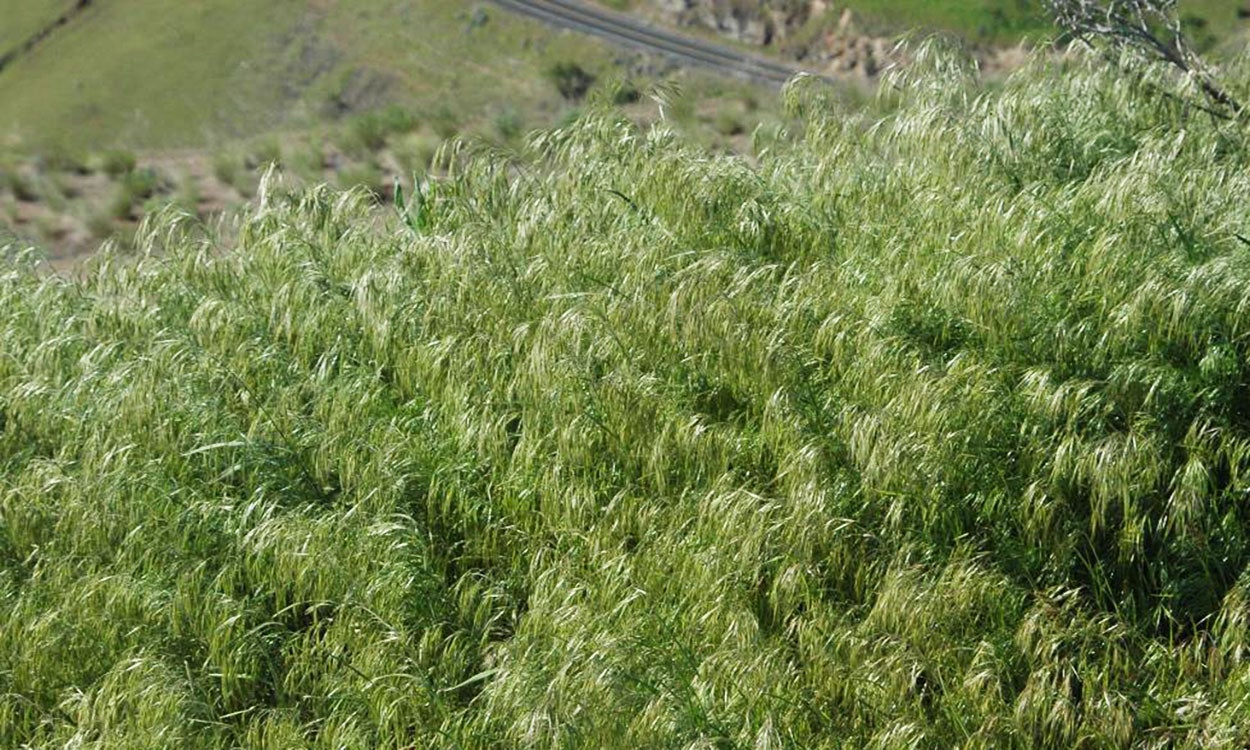
Field Pennycress
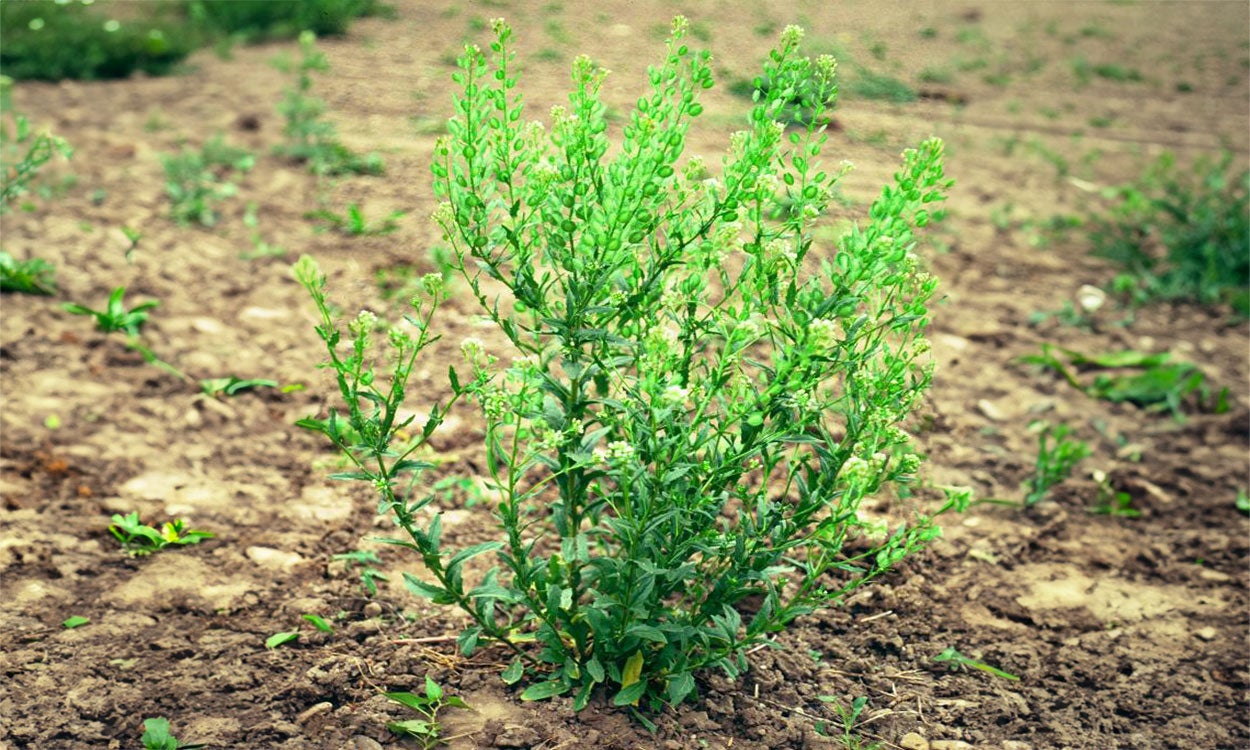
Summer Annual Weeds
Early emerging summer annual weeds include, but are not limited to: common and giant ragweed, kochia, common lambsquarters, and woolly cupgrass. Strong preemergence herbicide programs will limit the germination of each species. However, it is important to note that weeds with larger seeds (such as woolly cupgrass and common and giant ragweed) are harder to control with preemergence herbicides. Even if strong and effective preemergence herbicides are utilized, there will likely be a few escapes of these species that will have to be controlled postemergence. Instead of going through an extensive list of postemergence herbicides, a few caveats are provided for each species below.
Common and Giant Ragweed
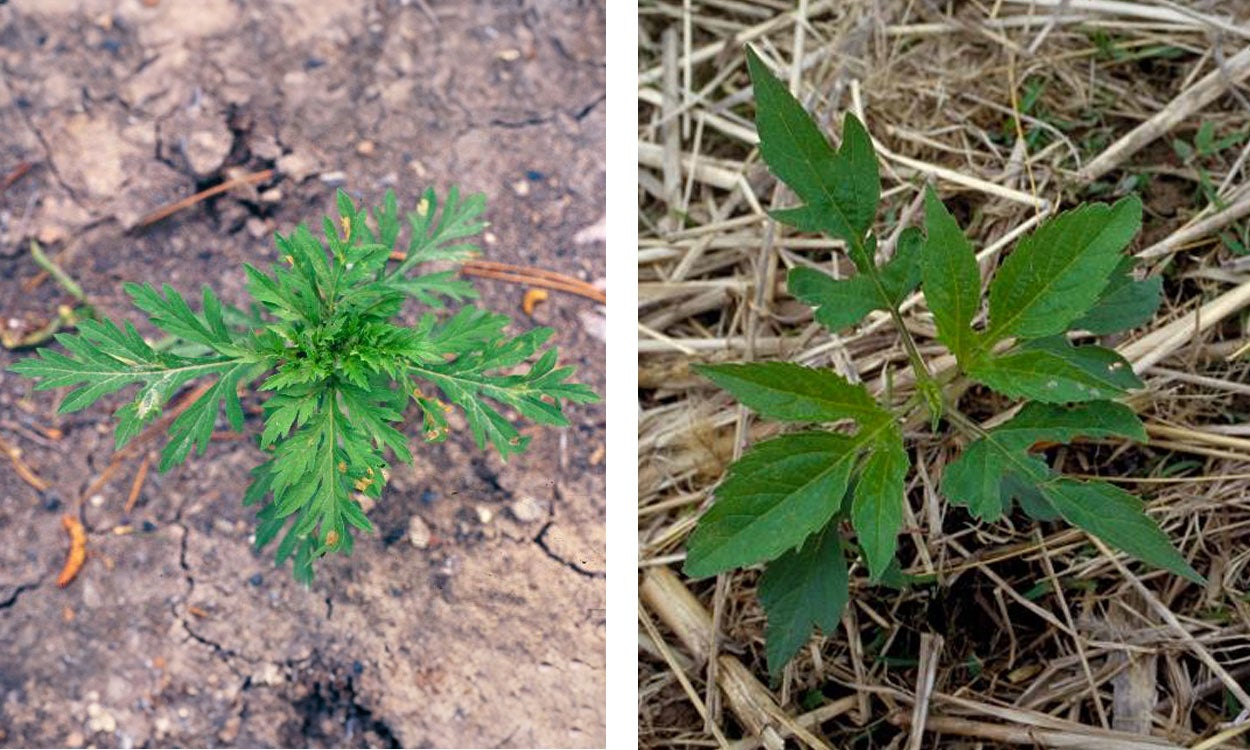
Resistance to ALS-inhibiting herbicides and glyphosate have been documented in South Dakota. Growth regulator herbicides (such as 2,4-D; dicamba; and fluoxypyr - Starane) are effective on these species.
Common Lambsquarters
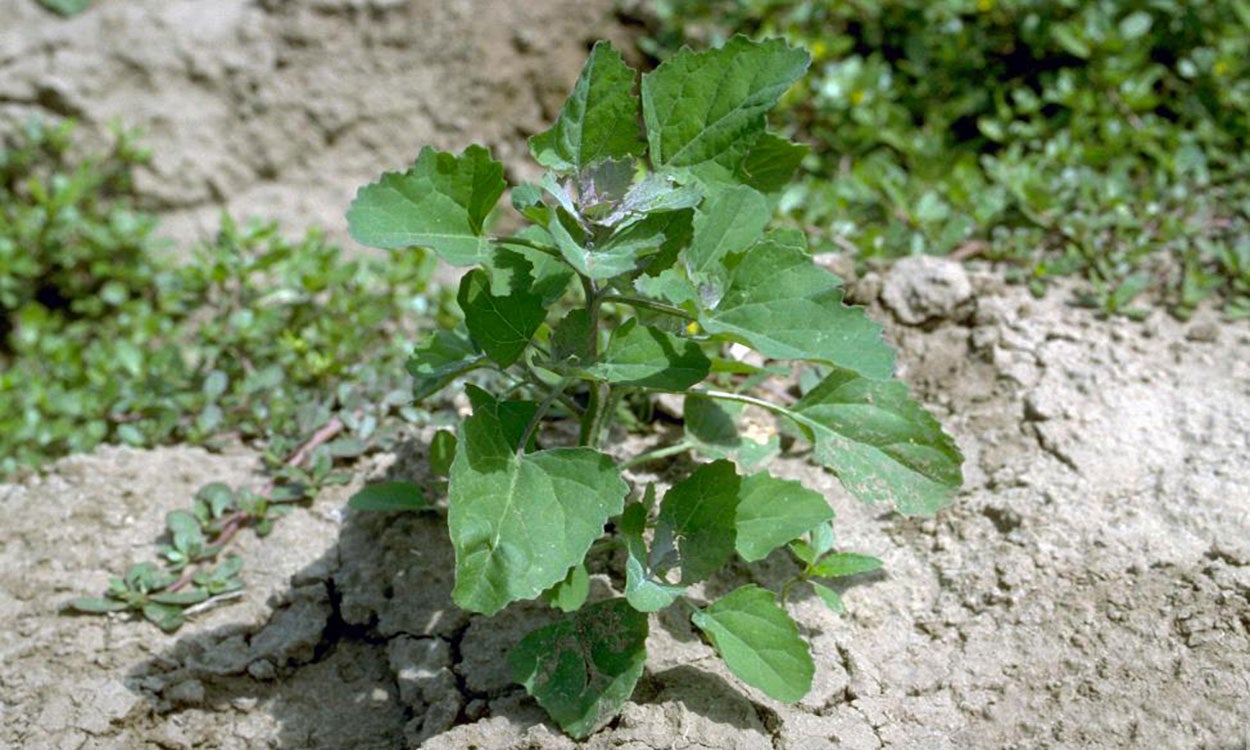
Relatively easy to manage with herbicides. PPO-inhibiting herbicides (such as fomesafen - Flexstar, lactofen - Cobra, or acifluorfen - Ultra Blazer) are not very effective on this species. When growing conventional soybean, utilize imazamox (Raptor) or thifensulfuron (Harmony).
Kochia
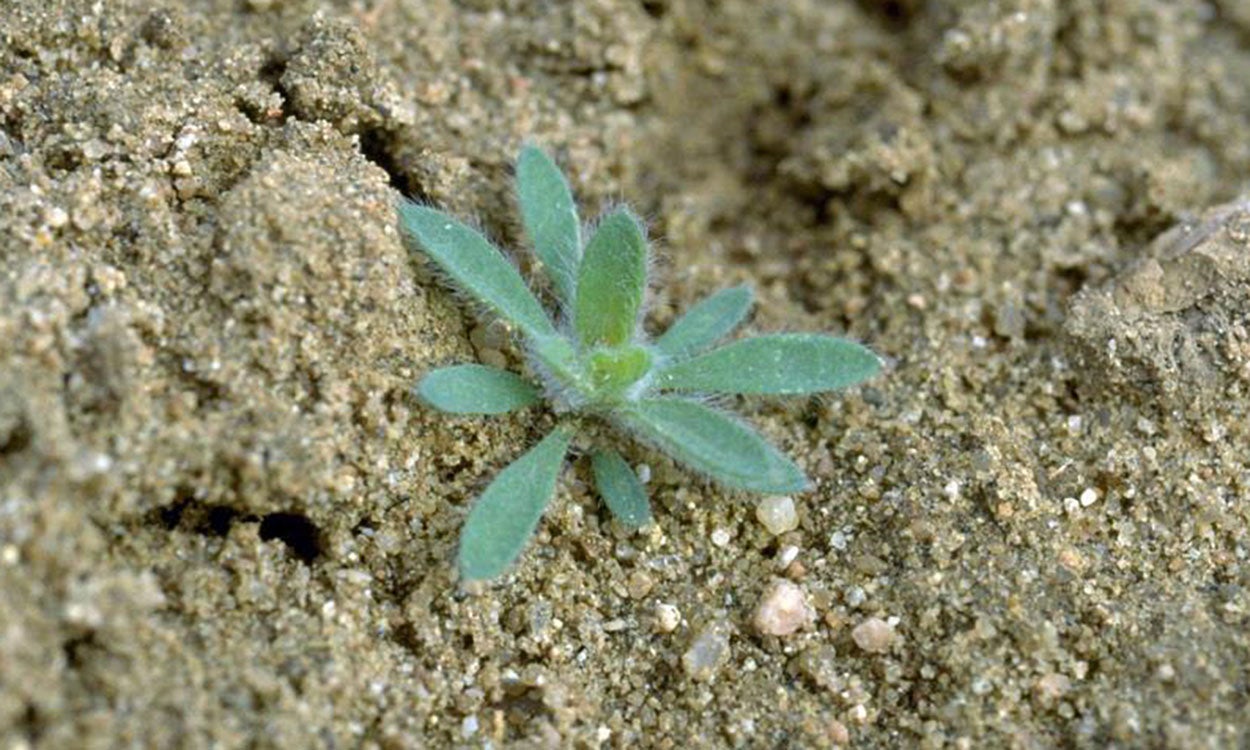
Widespread resistance to ALS-inhibiting herbicides and glyphosate. Resistance to dicamba, fluroxypr (Starane) and PPO-inhibiting herbicides (such as carfentrazone - Aim, and saflufenacil - Sharpen) have been documented in surrounding states. Use multiple herbicide groups in every application to reduce selection pressure on resistant biotypes. Additionally, use non-chemical tactics where feasible to increase management effectiveness on resistant and susceptible kochia.
Woolly Cupgrass

Generally, not as common in South Dakota as it once was before Roundup Ready crops. However, woolly cupgrass is appearing in SDSU research farms in fields where glyphosate is not commonly applied. Nicosulfuron (Accent) is effective on this species if growing conventional corn. Flucarbzone (PrePare, Everest) can provide variable control in wheat. If growing CoAXium wheat, then quizalofop (Aggressor) is effective. If growing Clearfield wheat, imazamox (Beyond) will provide variable control. It is easy to manage in soybean with graminicides, such as clethodim (Select) and fluazifop (Fusilade).
Herbicide Selection
While many herbicides have already been purchased, refer to the latest SDSU Extension Pest Management Guides for a full list of herbicides that can be used in various South Dakota crops. The Weed Control Field Test Data is also available to determine what herbicides are effective on select weed species.
